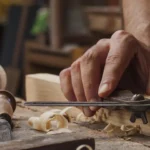Most wounds heal and leave behind a flat scar that fades with time. But for some people, the healing process takes an unusual turn, creating scars that grow larger and thicker than expected. These are known as keloid scars, and they can last for years or even a lifetime if left untreated.
What Are Keloids?
A keloid is an overgrowth of scar tissue caused by an excessive healing response. When skin is injured, the body produces collagen to repair the damage. In the case of keloids, collagen production doesn’t stop when it should, leading to a dense, raised scar that extends beyond the original wound.
Keloids can form anywhere but are most common on the shoulders, chest, upper back, earlobes, and jawline.
Causes and Risk Factors
Keloids can develop after:
- Cuts and surgical incisions
- Burns or blisters
- Acne scars
- Piercings and tattoos
- Vaccination sites
- Minor scratches or insect bites
People at higher risk include:
- Those with a family history of keloids
- Individuals with darker skin tones
- People between 10 and 30 years old
How to Identify a Keloid
Keloids are often easy to recognize because of their distinctive appearance:
- Firm, thick, and raised texture
- Shiny surface that may appear pink, red, brown, or darker
- Growth that spreads beyond the original wound
- Possible itching, tenderness, or discomfort
While keloids are noncancerous, they can be irritating and emotionally distressing, particularly when they form in visible areas.
Treatment Options
Managing keloids can be challenging because they have a tendency to return after treatment. However, several methods can help reduce their size and symptoms.
- Corticosteroid Injections
These help flatten the scar and reduce inflammation.
- Laser Therapy
Improves texture and pigmentation while minimizing redness.
- Cryotherapy
Freezes the keloid to shrink its size, best for smaller scars.
- Surgical Removal
Removes the scar completely but often combined with other treatments to prevent regrowth.
- Silicone Sheets or Gel
Applied consistently to soften and flatten the scar.
- Pressure Dressings
Compression helps slow collagen production and limit scar growth.
Prevention Strategies
For people prone to keloids, prevention is better than treatment. Consider the following:
- Avoid elective piercings and tattoos.
- Treat skin injuries quickly and gently.
- Use silicone products during wound healing.
- Protect healing skin from direct sunlight.
- Inform your healthcare provider before surgery so preventive measures can be taken.
The Psychological Impact of Keloids
Although keloids don’t threaten physical health, they can have a strong emotional impact. Scars in visible areas may lead to self-consciousness, anxiety, or even avoidance of social interactions. Addressing both the physical and emotional aspects of keloids is important for overall well-being.
Advances in Keloid Research
New treatments are being developed that target the cellular processes behind excessive collagen production. Combination approaches, such as using corticosteroids with laser therapy or applying radiation after surgical removal, have shown improved success rates.
Researchers are also exploring gene-based therapies that could one day stop keloids from forming entirely.
Final Thoughts
Keloids are the result of the body’s healing process going beyond what’s necessary. While they can be persistent and challenging to treat, early intervention, consistent care, and preventive measures can make a significant difference. By understanding the causes, risk factors, and treatment options, individuals can better manage keloids and protect their skin health.

















